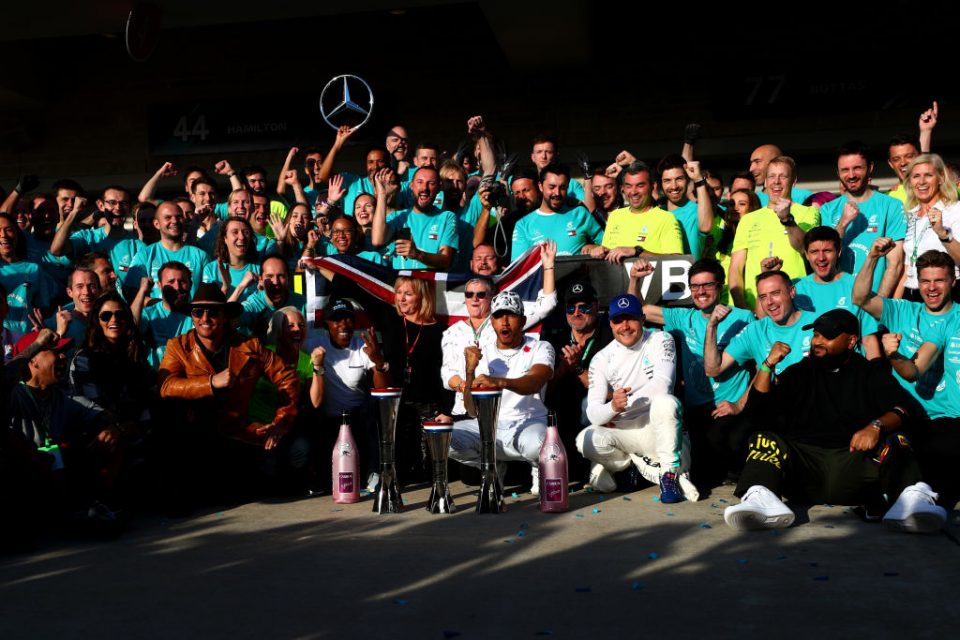Revealed: How Lewis Hamilton and Mercedes retained their Formula One titles but kept a lid on costs

Lewis Hamilton’s Mercedes team has become the only outfit in the past decade to win the Formula One championship without increasing its spending by more than £1m.
Hamilton steered his Mercedes to a sixth title at last weekend’s US Grand Prix despite the team’s costs only increasing by £0.9m to £321.5m, analysis of company accounts shows.
The results are revealed in accounts for 2018, which is when this year’s car was developed.
Read more: Why is Hamilton admired but not loved, even in Britain?
Mercedes also retained their constructors’ title, winning it for the sixth successive season.
Eight of the 10 teams file publicly available accounts and they show that their costs rose by an average of £12m each in 2018 – and surged by £79m over the previous decade.
That increase led to calls for a £135m cap on spending, which was announced last week and is due to come into force in 2021.
Mercedes is already heading in the right direction. Not only has it become the title-winner with the lowest increase in costs over the past decade, but it also holds the previous record which came in 2015 when its spending rose by £8.1m.
The costs of the team’s engine division, which is separate, grew £3.6m to £186.7m – an increase that is also a world away from its rivals.
Mercedes is ticking over better now because it has won both F1 titles for the past six seasons running. It is on a roll and has no need to increase costs dramatically in a bid to boost performance.
Cost cuts
It is still investing, however, and total salary payments increased by 7.5 per cent to £93.7m last year, when it hired 56 additional staff, taking its total to 968.
Likewise, 58 staff joined its engine division, boosting its wage bill by 8.9 per cent to £57.2m. Its research and development spending also surged by 24.2 per cent to £116.7m, although that is not solely focused on F1.
Mercedes’ engine division builds the 1.6-litre V6 turbos which power its F1 team and are supplied to rival outfits Williams and Racing Point.
It is also integrating them into the Mercedes-AMG One hypercar which is on track to have a top speed of 218mph and cost £2.2m when it launches next year.
The increase in Mercedes’ spending last year was almost entirely offset by cost cuts throughout the F1 outfit.

It has managed to save money by making parts faster, simpler, lighter and cheaper, which in turn reduces air freight and other associated costs.
It shows that Mercedes has been conscious of the importance of cutting costs even though it wasn’t forced to do so. This approach comes right from the top.
The German car manufacturer only has a 60 per cent stake in its eponymous team, with 10 per cent owned by the estate of late former F1 champion Niki Lauda and 30 per cent in the hands of its team boss, Toto Wolff.
Austrian Wolff, 47, has been an entrepreneur from an early age and has invested in a number of technology and motorsport companies.
His first F1 investment came in 2009 when he bought a 16 per cent stake in Williams, which had fallen on hard times.
Wolff became a non-executive director of the team and helped to turn its fortunes around which put him on Mercedes’ radar.
It was looking for a new boss to run its F1 team so Wolff sold his stake in Williams – and the rest is history.
Main image credit: Getty